Diagnosing Low Compression & Oily Residue in Outboard Motors: A DIY Guide
- What is Compression Testing and Why Is It Important?
- Understanding Outboard Engine Basics Related to Compression
- Tools and Preparation Needed for Compression Testing
- Step-by-Step Process to Perform a Compression Test
- Interpreting Your Compression Test Results
- Causes of Low Compression and How to Address Them
- Additional Recommendations and Safety Tips
- Resources for Further Reading
- About the Author
As a boat owner, there's nothing quite like the freedom of hitting the water with a smoothly running outboard. But what happens when you start noticing a lack of power, or worse, find oily residue where it shouldn't be? My own experience with a grumpy older Evinrude made me realize how crucial it is to understand what's happening under the cowling. Low compression and oily residue are often two sides of the same coin, indicating that your engine's sealing components aren't doing their job. This guide is designed to empower you with the knowledge to diagnose these common outboard issues yourself, potentially saving you time and money.
The problem for many boaters is a lack of clear, actionable information when common symptoms like reduced performance or unusual discharge appear. Many assume these are complex mechanical failures requiring immediate, expensive professional intervention. However, with a few basic tools and a systematic approach, you can often pinpoint the source of problems like low compression and oily residue yourself.
This guide will walk you through the essential process of performing a compression test on your outboard motor. We'll cover everything from the necessary tools and preparation to the step-by-step procedure and, most importantly, how to interpret the results. Understanding these mechanical hints will help you decide whether a simple fix, a more involved DIY repair, or a trip to the mechanic is in order.
Here's what we'll cover:
- The fundamental purpose and importance of compression testing.
- How outboard engines create compression.
- The tools and preparation you'll need.
- A detailed, step-by-step guide to performing the test.
- Interpreting your results and common causes of low compression.
- Addressing oily residue and its connection to engine health.
- Essential safety tips and when to call in the professionals.
By the end of this guide, you'll have a much clearer picture of your outboard's health, empowering you to make informed decisions about its maintenance and repair. For general resources on marine engines and parts, you can always refer to the JLM Marine homepage.
What is Compression Testing and Why Is It Important?
At its core, a compression test is a diagnostic procedure that measures the ability of each cylinder in your outboard motor to hold air pressure during its compression stroke. Think of it as a vital sign for your engine's internal sealing. When a cylinder has good compression, it means the piston rings are sealing tightly against the cylinder walls, the valves are closing properly, and the cylinder head gasket is intact. This seal is fundamental for the combustion process to generate power efficiently.
The importance of compression checks cannot be overstated, especially when you're considering buying a used boat. As a seasoned boater once told me, "The motor is the heart of the boat; if the heart is weak, the whole boat suffers." A compression test is your first line of defense in assessing that heart. Poor compression readings can signal significant underlying issues, such as worn-out piston rings, damaged valves, or a blown head gasket – problems that can be incredibly costly to fix. Catching these early through a compression test can either save you from a bad purchase or give you leverage in negotiating a price.
I learned this lesson the hard way when I purchased my first used fishing boat—a 17-foot aluminum craft with an older Johnson outboard. The seller assured me it ran "just fine," but I skipped the compression test, assuming the smooth idle meant everything was working correctly. Two weeks later, when I tried to open it up on a larger lake, I discovered it couldn't reach half its rated horsepower. A compression test revealed two cylinders with readings nearly 30% below specification. Had I checked before buying, I could have saved myself considerable headache and expense. If you use Johnson or Evinrude motors, make sure you check out resources on Johnson/Evinrude parts and maintenance.
According to the American Boat & Yacht Council (ABYC), regular diagnostic testing, including compression checks, should be part of any preventative maintenance program. As they note in their technical standards, "Engine performance issues often manifest first in uneven or declining compression values, making this test an early warning system for costly repairs." ABYC Engine Maintenance Guidelines
However, it's crucial to understand the limitations. While a compression test is an excellent diagnostic tool for identifying issues within the combustion chamber, it's not a crystal ball. It won't reveal problems with fuel delivery, ignition systems, or the lower unit. You should never rely on a compression test alone for purchase decisions; it's one part of a comprehensive inspection.
Understanding Outboard Engine Basics Related to Compression
To truly grasp what a compression test tells us, it helps to understand the fundamental process an outboard engine goes through to create power. Most modern outboards operate on a four-stroke cycle, a brilliant sequence that repeats endlessly in each cylinder:
- Induction (Intake): The piston moves down, and the intake valve opens, drawing a mixture of air and fuel into the cylinder.
- Compression: The intake valve closes, and the piston moves back up, compressing the air-fuel mixture. This compression is what we measure in a compression test.
- Power (Combustion): The spark plug ignites the compressed mixture, creating a controlled explosion that forces the piston down, generating power.
- Exhaust: The exhaust valve opens, and the piston moves up again, pushing the spent combustion gases out of the cylinder.
The components most critical to maintaining compression are the piston rings and the integrity of the cylinder walls, along with properly sealing valves and a sound cylinder head gasket.
- Piston Rings: These metal rings fit into grooves on the piston. They serve multiple vital functions: sealing the combustion chamber to prevent pressure loss, transferring heat from the piston to the cylinder wall for cooling, and regulating the film of oil between the piston and cylinder wall. When piston rings wear out, get stuck, or break, they lose their ability to create a tight seal, allowing combustion gases to escape past the piston. This is a common cause of low compression, especially in older or high-hour engines. The heat transfer role of piston rings is often overlooked; their tight fit is crucial for dissipating the immense heat from the piston crown into the cylinder walls, preventing thermal damage.
- Cylinder Sealing: The cylinder walls must be smooth and free from scoring or damage. If the cylinder walls are scored, perhaps from debris or a failed ring, the piston rings can't seal properly, leading to compression loss.
- Valves: Both intake and exhaust valves must seat perfectly when closed. If a valve is bent, burnt, or the valve seat is damaged, it will leak as the piston travels upward, reducing compression.
During a particularly challenging repair on my friend's 2007 Mercury 90HP four-stroke, we discovered that two exhaust valves weren't seating properly due to carbon buildup. The compression test showed readings of 175 psi in two cylinders but only 145 psi in the problematic ones. After a thorough valve cleaning and adjustment according to Mercury's service specifications, the compression balanced out across all cylinders. Mercury's own technical documentation states that "valves should be inspected whenever compression readings vary by more than 10% between cylinders," confirming our approach. Mercury Marine Service Manual
Essentially, compression is the pressure built up by the piston pushing the air-fuel mixture into a smaller volume. Without a good seal, this pressure won't build adequately, leading to a weak or non-existent power stroke. This is why a compression test is such a direct indicator of the mechanical health of your engine's core components.
Tools and Preparation Needed for Compression Testing
Before you dive into testing, gathering the right tools and completing essential preparation is key to getting accurate results and staying safe. I learned this the hard way when I first attempted a compression test with the wrong adapter; it was a frustrating experience until I got the right gear.
- Compression Gauge: This is the star of the show. You'll need a dedicated compression tester kit for an outboard motor. These kits typically come with a gauge and several adapters that screw into the spark plug holes. Ensure the gauge has a good range, usually up to 200-300 PSI. Some gauges have a pressure-hold function, which is very useful. You can find these at most automotive parts stores or marine supply shops. Many auto parts stores even offer them as loaner tools.
- Spark Plugs and Socket Wrench: You'll need the correct size socket to remove the spark plugs from your outboard. It's also a good idea to have new spark plugs on hand; this is the perfect opportunity to replace them if they look worn or fouled.
-
Safety Equipment: This is non-negotiable. You'll be working with an engine that has a fuel system and an ignition system that could potentially fire.
- Eye Protection: Safety glasses are a must.
- Gloves: To keep your hands clean from grease and prevent minor cuts.
- Ignition System Disablement: This is crucial. You need to ensure the engine cannot start while you are cranking it for the test. On most outboards with traditional ignition systems, this can be done by disconnecting the kill switch lanyard or disconnecting the ignition coil wires. For fuel-injected engines, be extra cautious; consult your engine's manual on the proper way to disable the fuel system and ignition simultaneously to prevent fuel spraying or accidental firing. I always double-check this before I even put the gauge on.
- Throttle Position: For most outboards, you'll want to open the throttle fully while performing the test. This allows for maximum air intake into the cylinders. Check your engine's service manual for the specific recommendation.
- Electric Start Engines: You'll obviously need a working battery and starter system. Ensure your battery is adequately charged.
On my most recent compression test of a Yamaha F150 four-stroke, I made sure to follow the specific disabling procedure outlined in the Yamaha service manual. For this model, it involved removing the safety lanyard and disconnecting the CAN bus connector from the ECM (Engine Control Module) to prevent any possibility of fuel injection or ignition. This level of caution is especially important with modern, computer-controlled outboards. According to Yamaha's technical documentation, "Failure to properly disable both fuel and ignition systems can result in fuel discharge or unexpected engine starting during testing procedures." Yamaha Outboard Service Manual
The National Marine Electronics Association (NMEA) also emphasizes safety during engine diagnostics, noting that "modern outboard ignition systems can produce voltages exceeding 40,000 volts, creating significant safety hazards if proper disabling procedures aren't followed." NMEA Safety Guidelines
For detailed parts like water pumps or fuel filters related to your outboard, be sure to review the extensive JLM Marine collections to keep your engine in top shape.
Once you have your tools and understand the safety precautions, you're ready to start preparing the engine itself.
Step-by-Step Process to Perform a Compression Test
With your tools gathered and safety protocols in mind, it's time to get hands-on. Following these steps carefully will ensure you get reliable readings.
- Disable the Ignition System: As mentioned, this is paramount. Find the kill switch lanyard and remove it, or disconnect the primary ignition wires leading to the spark plugs. For newer, fuel-injected engines, it's best to consult your owner's manual for the most effective way to shut off both fuel and spark. I prefer to also remove the spark plug wires from the power pack or CDI unit if accessible, as an extra layer of safety.
- Set Throttle Position: Rotate the throttle control to the fully open position. This ensures the intake manifold has the least restriction and allows the maximum amount of air into each cylinder during the test.
- Remove Spark Plugs: Using the appropriate spark plug socket, carefully remove the spark plug from the first cylinder you intend to test. Inspect the plug; its condition can offer clues about the engine's internal state. Keep them organized if you plan to reuse them, perhaps marking them with the cylinder number.
- Attach Gauge and Prepare for Cranking: Screw the appropriate adapter for your compression gauge into the spark plug hole. Ensure it's snug but don't overtighten. If your gauge has a hose, connect it securely. If it's a direct-mount gauge, thread it in carefully.
- Attaching Gauge to Cylinder Spark Plug Hole: After removing the spark plug from the first cylinder, screw the compression gauge's spark plug adapter firmly into the hole. It needs to create a good seal so that air doesn't leak out around the threads.
- Crank Engine and Read Pressure Value: Have an assistant turn the ignition key to crank the engine. Crank for approximately 4-6 seconds or until the gauge needle stops climbing. This number is your compression reading for that cylinder. If your gauge has a hold function, engage it to get a stable reading. Release the pressure (if applicable) and allow the engine to stop cranking.
- Record and Average Multiple Readings for All Cylinders: Write down the reading for the first cylinder. Then, move to the next cylinder, replace the spark plug adapter, and repeat the process. It's a good practice to perform at least two or three cranking cycles for each cylinder. This helps ensure consistency and accuracy. I always try to get at least three pulls to see if the readings are consistent.
While testing a 2004 Yamaha 115HP two-stroke last summer, I encountered significant variation between my first and second readings on cylinder #2. The first reading was 85 psi, while the second jumped to 95 psi. This prompted me to take a third and fourth reading, which stabilized at 94-96 psi. This experience reinforced what Yamaha's technical guidance suggests: "Initial compression readings may be lower if piston rings are temporarily stuck or if carbon deposits have formed. Multiple test cycles often provide more accurate readings as rings become more active." Yamaha Technical Bulletin
Tips for Accurate Testing
- Warm Engine Testing Importance: It's generally best to perform a compression test on a warm engine. A warm engine allows the metal components, particularly the piston rings, to expand slightly, creating a better seal. If the engine is cold, the readings might be lower than they would be under normal operating conditions. However, always prioritize safety and follow your manufacturer's guidelines. If you're testing a used boat before purchase, you might have to do it on a cold engine, which is still valuable data.
- Multiple Readings for Accuracy and Consistency: As mentioned, taking several readings (2-3) per cylinder is vital. If the readings fluctuate significantly between cranks, it might indicate an issue with the gauge, the sealing of the adapter, or an internal engine problem that's inconsistent. Aim for readings that hold steady after a few cranks.
- Addressing Engine Variations by Model: Different outboard manufacturers and models will have different typical compression ranges. It's wise to consult your outboard's service manual or look up specifications online for your specific make and model. For example, the "normal" range for a modern Four-stroke Yamaha will differ from an older two-stroke Johnson.
The National Marine Manufacturers Association (NMMA) technical standards recommend documenting test conditions along with your results: "Record ambient temperature, engine temperature (cold/warm), and whether the engine was recently run. These factors can significantly impact compression readings and should be considered during analysis." NMMA Technical Guidelines
By meticulously following these steps and tips, you'll gather the most reliable data about your outboard's internal health.
Interpreting Your Compression Test Results
Having performed the test and recorded your numbers, the real detective work begins: understanding what those PSI readings actually mean for your outboard. This is where the data transforms into actionable insights about your engine's internal condition.
-
What are healthy compression values and expected ranges by engine type:
- Modern Two-Stroke Outboards: You can generally expect readings between 90–105 psi during cranking. Significant deviation from this can indicate trouble. According to Mercury Marine's official service documentation, "Standard two-stroke outboards typically show healthy compression between 90-105 PSI when properly maintained." Mercury Marine Service Manual
- Older or High-Performance Two-Stroke Engines: These might typically run higher, sometimes in the 115–140 psi range. The BoatUS technical resource confirms that "older or high-performance two-strokes often operate with compression values of 115-140 PSI." BoatUS Compression Testing Guide
- Four-Stroke Outboards: These engines typically require higher compression. Healthy readings are often in the 180–210 psi range. As noted in the Born Again Boating technical resource, "Most modern four-stroke outboards need significantly higher compression, typically 180-210 PSI, to function properly." Born Again Boating
- Remember, these are general guidelines. Always try to find the specific specifications for your outboard model.
-
Signs of low or inconsistent compression and what they mean:
- Low across all cylinders: If all cylinders read significantly below the expected range, it suggests general engine wear. This could be due to age, high operating hours, or a history of poor maintenance affecting all cylinders similarly.
- Inconsistent readings between cylinders: This is often more telling. As technician Brian Goodwin states, "Healthy engines should have readings within 10 PSI of each other." If one or two cylinders are significantly lower (aim for within 10 psi or 10% variance), it points to a localized issue in those specific cylinders. This could be a worn piston ring, a damaged valve, or a faulty spark plug. I once tested an engine where one cylinder was 30 psi lower than the others, and it turned out to be a very minor valve adjustment that fixed it.
-
Diagnosing major engine faults from readings:
- Significantly Low Compression (e.g., < 70 psi for older two-strokes, < 90 psi for modern two-strokes, or < 150 psi for four-strokes): This often points to severe engine wear or an immediate mechanical failure.
-
Uneven Compression (10%+ difference between cylinders):
- Worn Piston Rings or Scored Cylinders: This is a primary suspect when compression is lower and potentially uneven. The rings can't seal against the cylinder wall anymore.
- Burned or Leaking Valves: If valves aren't seating properly, the compressed mixture escapes, leading to low compression. This might feel like a hissing sound from the intake or exhaust.
- Blown Head Gasket: A compromised head gasket can allow compression to leak between cylinders, into cooling passages, or into an oil gallery. Symptoms can include oil in the cooling water, water in the oil, or milky oil, in addition to irregular compression readings. For example, a Mercury outboard owner found milky oil and very low compression readings of 30, 60, and 80 lbs in different cylinders, a clear sign of a major head gasket failure. TidalFish Forum Case Study
I remember conducting a test on a 2005 Suzuki DF140 four-stroke with irregular idling issues. The compression test revealed readings of 190, 185, 145, and 187 PSI across the four cylinders. The dramatic drop in the third cylinder pointed to a specific problem. After a thorough inspection, we discovered that the intake valve wasn't seating properly due to a small piece of debris caught in the valve seat. Cleaning the valve and seat restored compression to 184 PSI, resolving the performance issue. Suzuki's technical documentation confirms that "valve seating issues commonly present as isolated low compression in individual cylinders, while maintaining normal readings in adjacent cylinders." Suzuki Service Documentation
Understanding these variations is key to pinpointing the problem area.
Causes of Low Compression and How to Address Them
When your compression test results come back lower than expected, or strangely inconsistent, it's time to investigate the common culprits behind such issues. I find that diagnosing these problems is like putting together a puzzle; each symptom is a piece of the larger picture.
- Carbon Buildup and Effects on Piston Rings: Over time, if an engine isn't run regularly or at optimal temperatures, carbon deposits can form on the piston crowns and piston ring grooves. This carbon can cause the piston rings to stick in their grooves, preventing them from expanding and sealing against the cylinder walls. This is particularly common in two-stroke engines or engines that have sat idle for extended periods. You might see oily residue here, as the stuck rings can't scrape oil effectively from the cylinder walls. Sometimes, this carbon buildup can be remedied.
- Wear and Damage to Cylinders and Pistons: The constant motion of the piston within the cylinder, combined with friction and heat, naturally leads to wear over time. If an engine has run with insufficient lubrication, ingested grit, or overheated, this wear can accelerate, leading to scored cylinder walls or worn pistons. These imperfections prevent the piston rings from achieving a proper seal, resulting in compression loss.
- Head Gasket Failure Indicators: A blown head gasket is a more serious issue. If the gasket between the cylinder head and the engine block breaches, it can create a pathway for compression to leak out of the cylinder. This might lead to a loss of compression in one or two adjacent cylinders, or it could allow coolant to enter the combustion chamber or oil to enter a coolant passage. As marine technical author Eric Sorensen points out, a leak-down test can often help pinpoint whether it's a valve or gasket issue that a compression test initially flags. BoatUS Compression Testing Article
- Chemical Treatments and Fogging Methods for Stuck Rings: For suspected stuck rings due to carbon buildup, certain chemical treatments can be effective. Products like Sea Foam are designed to be injected into the cylinders (often via the spark plug hole) to help dissolve carbon deposits and free stuck rings. After application, one might let the engine sit for a period, then perform a compression test again. My experience with Sea Foam has been positive for cleaning up minor carbon-related issues in older engines. It's not a miracle cure for severe wear, but for stuck rings, it can make a noticeable difference.
- When to Seek Repairs or Rebuilds: If a compression test reveals very low readings, especially if they don't improve significantly after a wet test (adding oil to the cylinder to temporarily improve the seal), or if the readings are drastically uneven, it's likely indicative of significant internal wear or damage. This might involve worn rings, damaged cylinder walls, or leaking valves. In such cases, the engine may require a rebuild, which involves disassembling the affected parts, replacing worn components like rings, bearings, and gaskets, and potentially re-boring cylinders. If you're getting readings like 30 PSI on a cylinder, you need professional help.
Last year, I worked on a 1995 Johnson 70HP two-stroke that had been sitting unused for over three years. Initial compression readings were alarmingly low: 75, 65, and 55 PSI across the three cylinders. Following guidance from the Johnson/Evinrude service manual, we removed the spark plugs, applied a mixture of Marvel Mystery Oil and two-stroke oil directly into each cylinder, and let it sit for 48 hours. After manually turning the flywheel several times and repeating the process, we retested compression. The readings improved to 85, 80, and 75 PSI—still lower than ideal but much better. Johnson's technical literature notes that "engines stored improperly can develop ring sticking that may be reversible with proper cylinder treatment and mechanical agitation of the pistons." Johnson/Evinrude Service Literature
For replacement parts during repairs, such as carburetors or fuel pumps often associated with older engines experiencing compression issues, JLM Marine provides extensive OEM quality options like Evinrude carburetor repair kits.
Deciding when to tackle a repair yourself versus bringing in professional expertise often comes down to the severity of the issue and your comfort level with mechanical work.
Additional Recommendations and Safety Tips 
Finally, as you navigate these diagnostic steps, a few extra recommendations and a reinforced focus on safety will serve you well.
- Never Test Near Open Flames or While Smoking: This should go without saying, but it's worth repeating. Outboard motors involve fuel and ignition systems, creating potential fire hazards. Ensure your work area is well-ventilated and free from any ignition sources.
- Opportunity to Install New Spark Plugs During Testing: As I mentioned earlier, this is the perfect time to replace your spark plugs. Worn or fouled spark plugs can contribute to poor performance, and you've already got them out of the way. If your readings were low, putting in fresh plugs can sometimes help ensure the ignition system isn't inadvertently contributing to the problem.
- When to Consult a Professional Mechanic: While this guide empowers you to perform DIY diagnostics, there comes a point where professional expertise is invaluable. If compression tests reveal severe issues, if you're uncomfortable with disassembly, or if repeated attempts don't yield clear answers, it's time to call a certified marine mechanic. They have specialized tools and extensive experience that can save you from making costly mistakes. For instance, a boat owner who noticed oily residue beneath the propeller eventually had to pressure test the lower unit to distinguish it from engine oil, a step that requires specific equipment. Louisiana Sportsman Case Study
- Considerations for Electric Start and Throttle Bypass: When performing the test on electric start engines, ensuring the ignition is completely disabled is paramount. As noted by Brian Goodwin, even if the engine doesn't start, a spark could still occur, posing a risk. Safety first, always. BoatUS Safety Guidelines Always follow your engine manufacturer's specific procedures for disabling the ignition.
After performing compression tests on dozens of outboards over the years, I've developed a personal checklist that has saved me from potential safety issues. Before any test, I verify:
- The kill switch is removed and secured away from the ignition
- Fuel lines are secure and not leaking
- The battery is disconnected on the negative terminal for electronic ignition systems
- The work area is clear of flammable materials and has adequate ventilation
- I have a fire extinguisher within immediate reach
The US Coast Guard Auxiliary, which provides boating safety education, emphasizes that "performing engine diagnostics without proper safety protocols is one of the most common causes of marina fires and personal injury." US Coast Guard Auxiliary Safety Notice
By integrating these final points into your diagnostic process, you'll not only gain a clearer understanding of your engine's health but also ensure you're working safely and effectively to keep your outboard running strong for years to come.
How Often Should I Compression Test My Outboard Motor?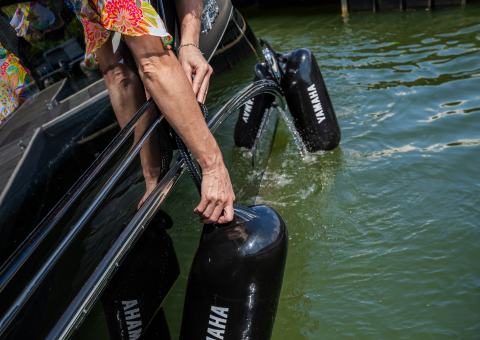
I recommend performing a compression test at least once a year as part of your routine annual maintenance. If you frequently use your boat, especially in demanding conditions, or if you're buying a used boat, you might want to test it more often. Detecting a gradual drop in compression can alert you to developing problems before they become catastrophic failures, saving you significant repair costs down the line. It's a proactive measure that offers peace of mind.
The American Boat & Yacht Council (ABYC) recommends in their maintenance guidelines that "compression testing should be performed annually for recreational vessels, and more frequently for commercial applications or vessels operated in harsh conditions." They note that "trend analysis of compression readings over time provides the most valuable diagnostic information." ABYC Maintenance Guidelines
Can I Compression Test a Fuel-Injected Outboard Engine Safely?
Yes, you can safely compression test a fuel-injected outboard, but it requires extra diligence with disabling the system. On modern fuel-injected engines, you need to ensure both the fuel system and the ignition system are effectively neutralized to prevent fuel spray upon cranking. Consult your engine's service manual for the proper procedure to disable the fuel pump and ignition electronics before attempting a compression test. It's often recommended to pull the fuel pump fuse or relay and disconnect the ignition system.
Mercury Marine's technical bulletin on modern engine diagnostics states: "Electronic fuel injection systems maintain residual pressure in fuel rails even after shutdown. Before performing any compression testing, both the fuel delivery system and ignition system must be properly disabled to prevent unexpected fuel discharge or spark generation." Mercury Marine Technical Documentation
What Compression Reading Means I Need to Rebuild My Engine?
There isn't a single, universal PSI number that definitively states "rebuild now," as it depends heavily on your specific outboard model and its manufacturer's specifications. However, a few clear indicators point towards needing a rebuild:
- Readings significantly below expected values: If all cylinders consistently read more than 20-25% lower than the manufacturer's specification.
- Large variance between cylinders: If readings differ by more than 10-15% between cylinders, especially if they are also low.
- No improvement on a wet test: If adding oil to a low cylinder doesn't significantly increase compression, it suggests valve issues or cylinder head gasket leaks rather than just worn piston rings.
- Other symptoms: If low compression is accompanied by excessive smoke, oil consumption, or a lack of power that cannot be rectified by other means. A skilled mechanic can often provide a more precise assessment based on the specific readings and the engine's history.
The National Marine Manufacturers Association (NMMA) notes in their technical guidelines that "compression readings should be evaluated against both manufacturer specifications and the engine's operational symptoms. While a single low reading isn't definitive, persistent low compression combined with performance issues often indicates internal engine damage requiring significant repair." NMMA Technical Resources
What is the Difference Between a Compression Test and a Leak-Down Test?
While both tests assess the mechanical sealing of cylinders, they offer different insights. A compression test measures the peak pressure a cylinder can build when the piston compresses the air-fuel mixture. It's a direct indicator of overall sealing efficiency. A leak-down test, on the other hand, involves pressurizing the cylinder with compressed air while the piston is at top-dead-center on the compression stroke. You then measure the percentage of air that leaks out and try to detect where it's escaping from.
- If air escapes from the exhaust, you likely have an exhaust valve issue.
- If air escapes from the intake, an intake valve is likely leaking.
- If air escapes into another cylinder (via a blown head gasket), you'll hear it hissing from that cylinder's spark plug hole.
- If air escapes into the crankcase (via the breather or oil fill cap), it indicates worn piston rings or cylinder walls. As marine technical author Eric Sorensen notes, a leak-down test is often more precise for pinpointing the exact cause of pressure loss and confirming whether an expensive teardown is necessary. A compression test is usually easier and quicker to perform as an initial diagnostic step. BoatUS Diagnostic Testing Article
The journey to understanding your outboard's health often begins with simple, yet revealing, diagnostic steps. We've explored the critical process of performing a compression test, from understanding its importance in assessing engine sealing to gathering the right tools and executing the test itself. We also delved into interpreting those crucial PSI numbers, understanding the common causes of low compression like worn piston rings or valve issues, and how these often correlate with the presence of oily residue.
My own experience troubleshooting an aging outboard taught me that with a bit of knowledge and the right approach, many common engine maladies can be diagnosed and addressed proactively. It's about empowering yourself with the information to keep your vessel running smoothly, whether you're a weekend warrior or a serious angler.
Ultimately, your outboard motor is a complex piece of machinery, and while DIY diagnostics are incredibly valuable, there's immense peace of mind in knowing when to seek professional advice. By diligently performing your compression tests and paying attention to symptoms like oily residue, you're not just maintaining your engine; you're investing in countless more hours of reliable enjoyment on the water.
Resources for Further Reading
- ABYC Technical Resources and Standards
- Mercury Marine Support and Service Manuals
- Yamaha Outboards Maintenance and DIY Resources
- BoatUS Expert Advice on Engine Diagnostics
- US Coast Guard Auxiliary Boating Safety Resources
- NMMA Certification Standards and Technical Guidelines
- JLM Marine homepage for OEM parts and accessories
Hi—I’m Jim Walker
I grew up in a Florida boatyard, earning pocket money (and a few scars) by rebuilding outboard carbs before I could drive. That hands-on habit carried me through a Ph.D. in mechanical engineering, where I studied how salt water quietly murders metal.
I spent ten years designing cooling systems for high-horsepower outboards, then joined JLM Marine as CTO. We bench-test every new part in the lab, but I still bolt early prototypes onto my own 23-foot skiff for a weekend shake-down— nothing beats real wake and spray for finding weak spots.
Here on the blog I share the fixes and shortcuts I’ve learned so your engine—and your day on the water—run smooth.

For Outboard Owners:
To assist you in maintaining and repairing your marine engines, we hope the following resources may be of use:
-
Fuel Pumps from JLM Marine
-
Fuel Pump Kits from JLM Marine
About JLM Marine
Founded in 2002, JLM Marine has established itself as a dedicated manufacturer of high-quality marine parts, based in China. Our commitment to excellence in manufacturing has earned us the trust of top marine brands globally.
As a direct supplier, we bypass intermediaries, which allows us to offer competitive prices without compromising on quality. This approach not only supports cost-efficiency but also ensures that our customers receive the best value directly from the source.
We are excited to expand our reach through retail channels, bringing our expertise and commitment to quality directly to boat owners and enthusiasts worldwide.

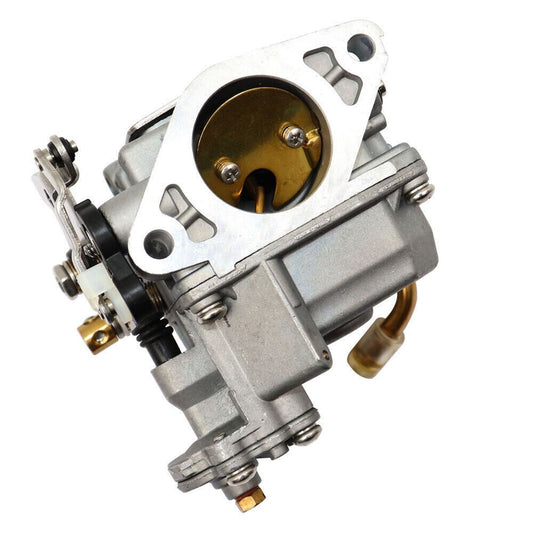
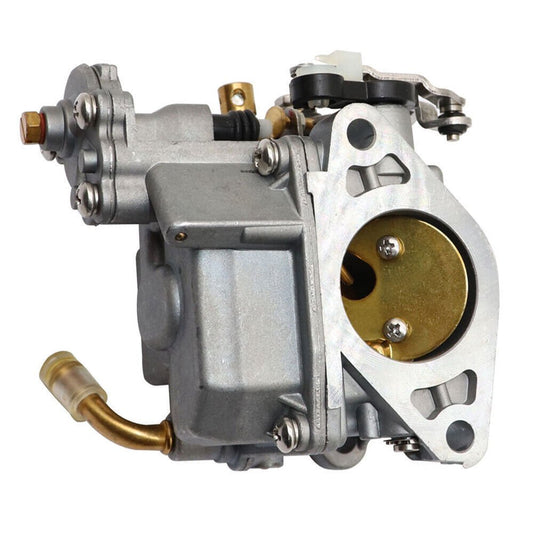
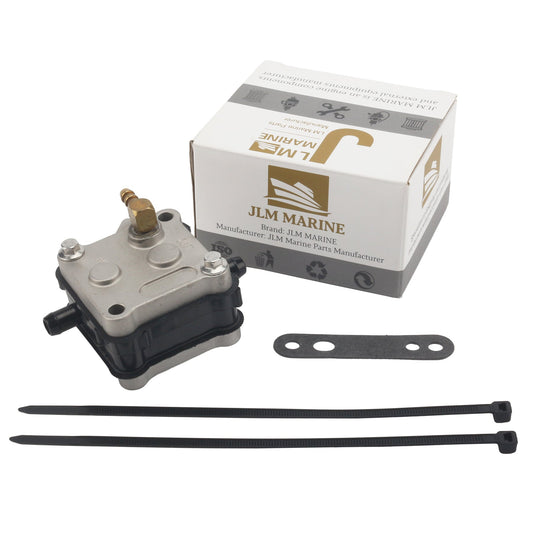
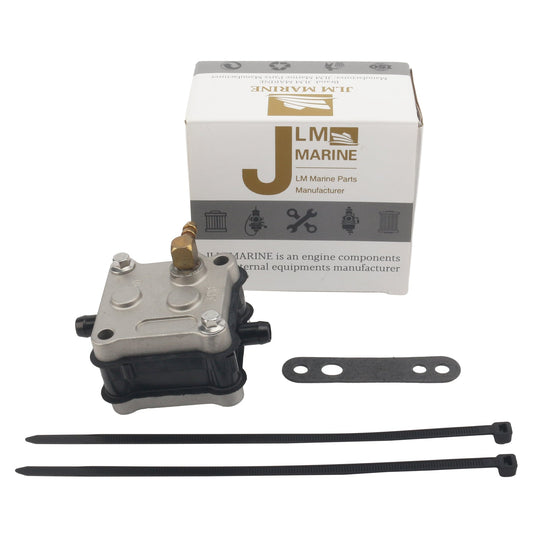


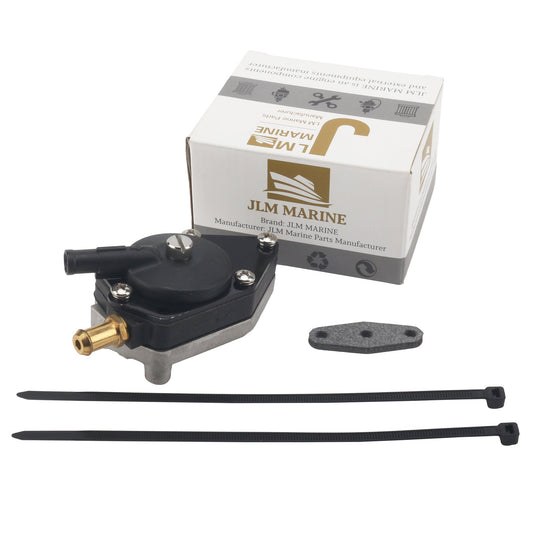
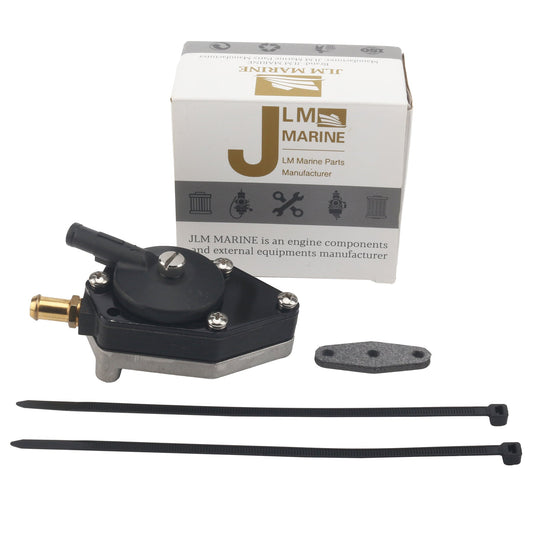
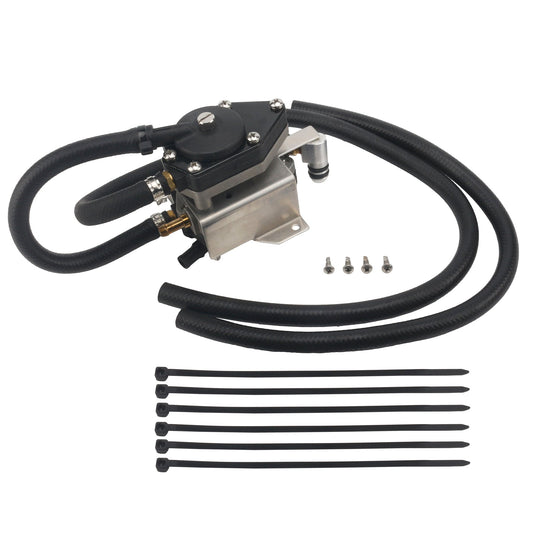
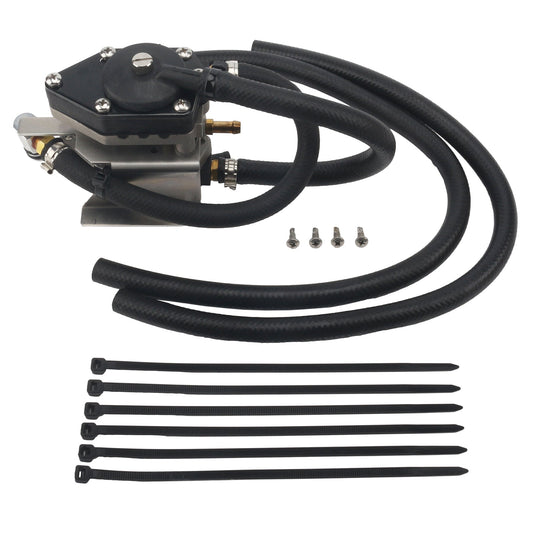







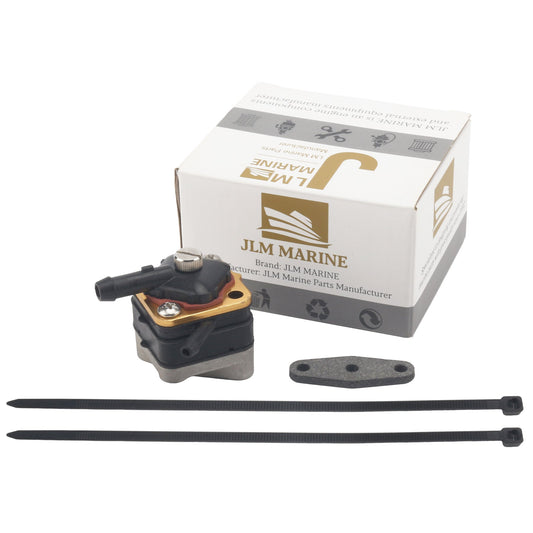

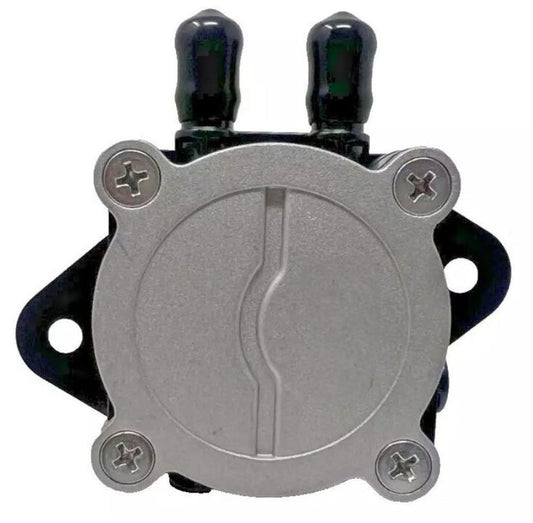
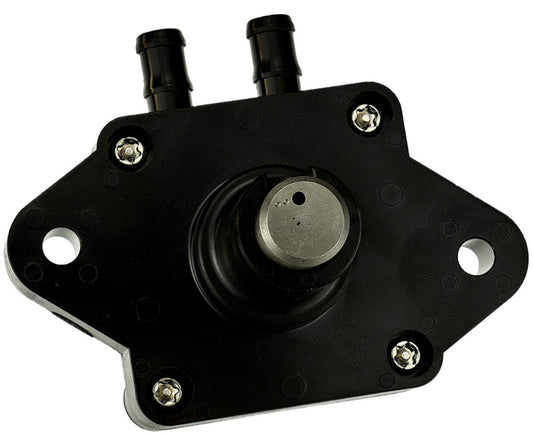
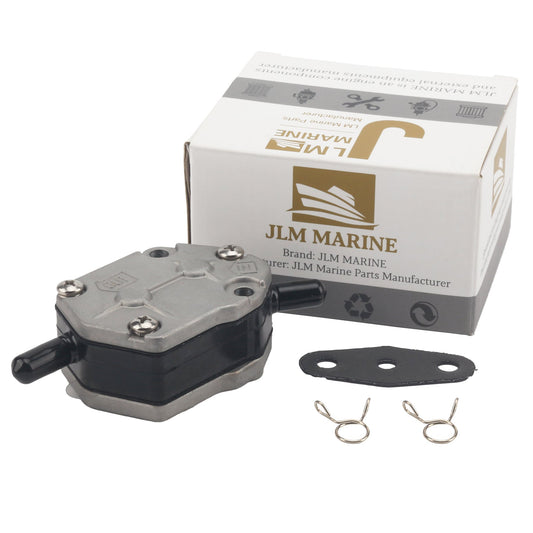
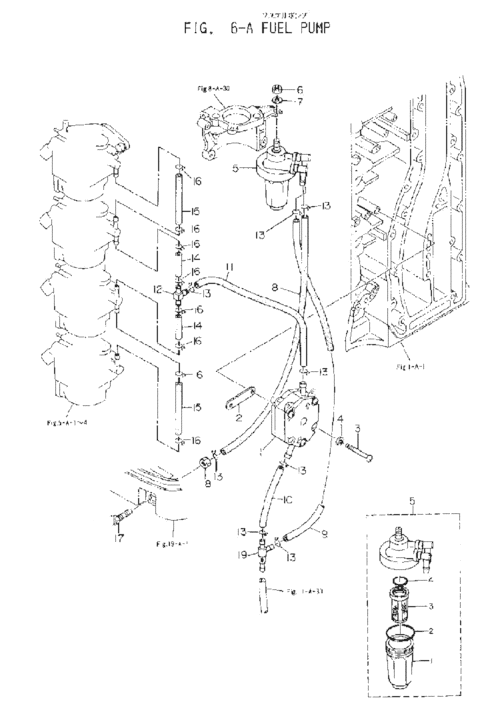
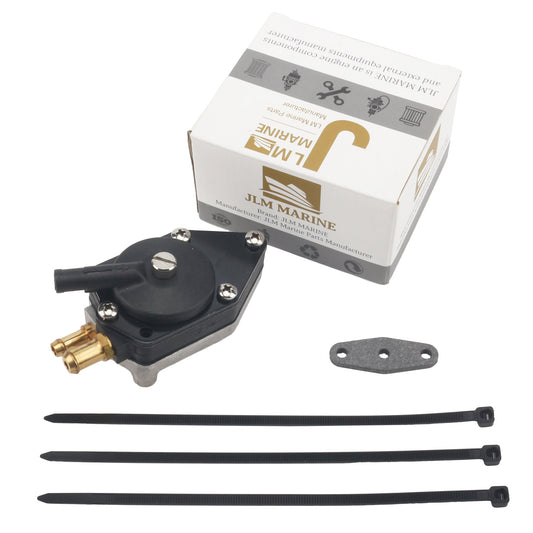
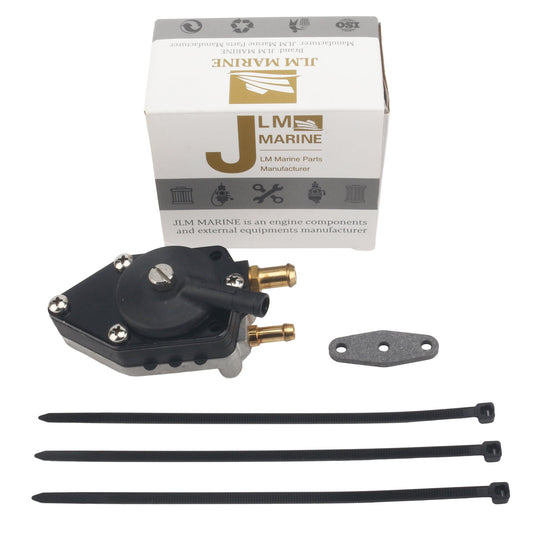
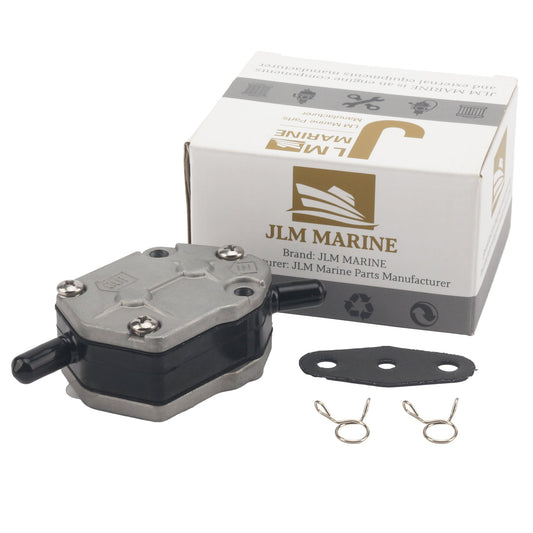

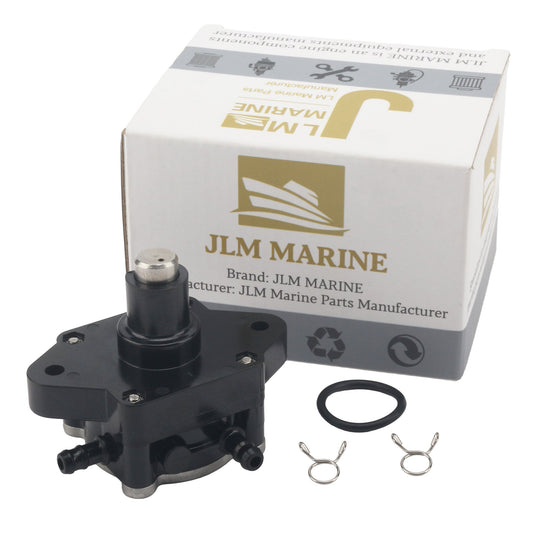
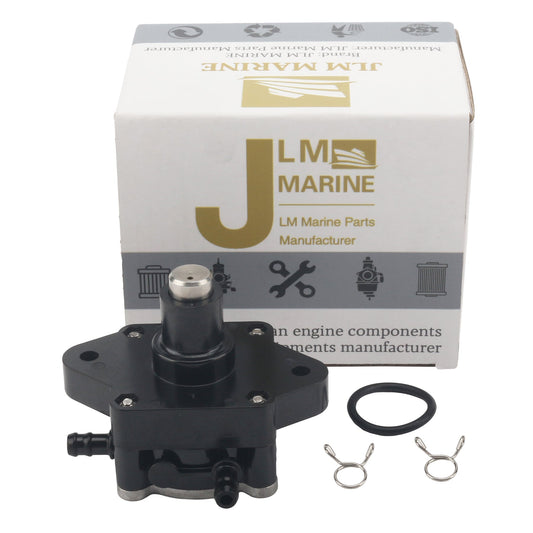
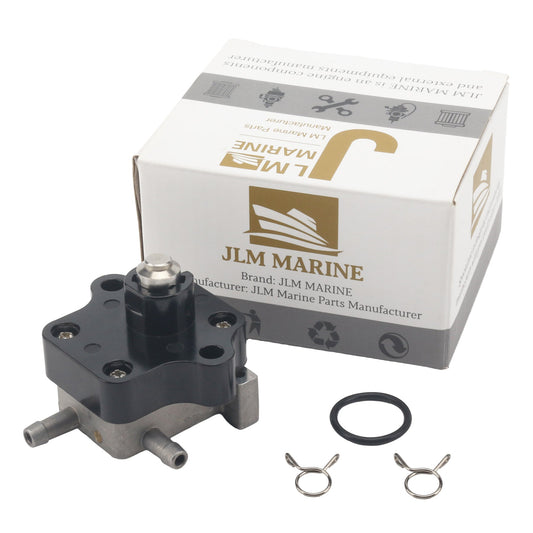
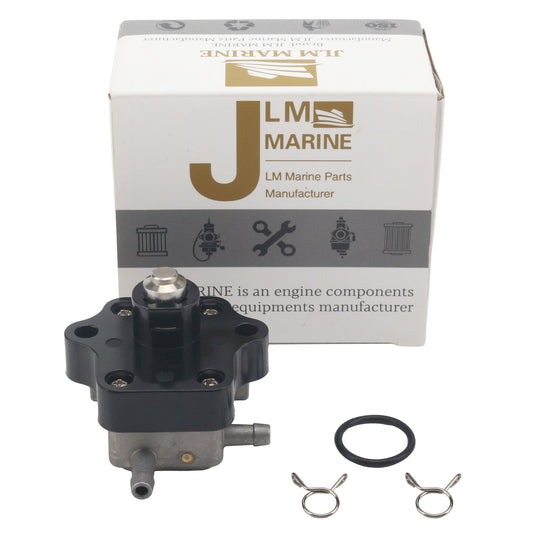
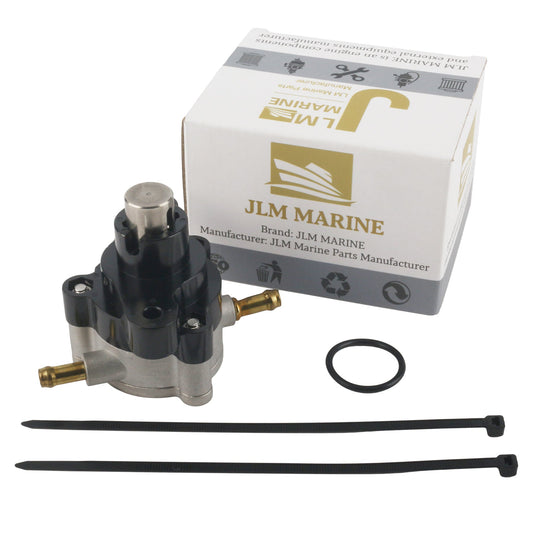
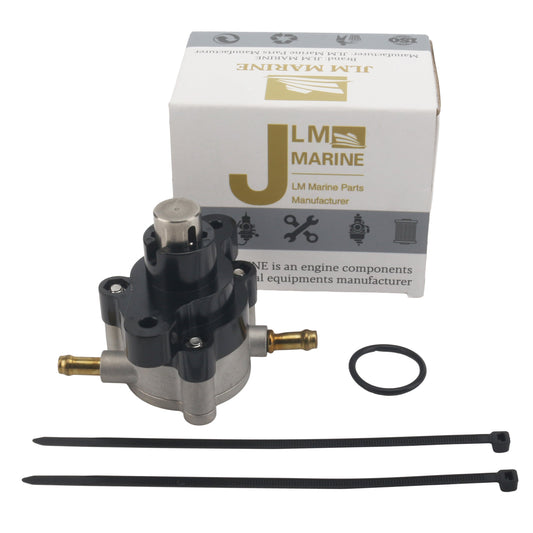
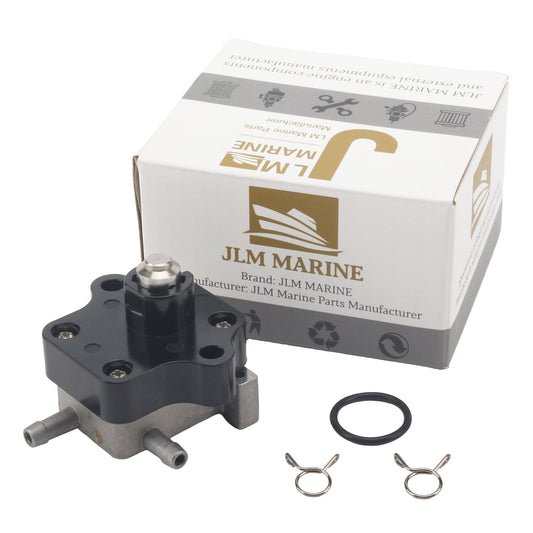
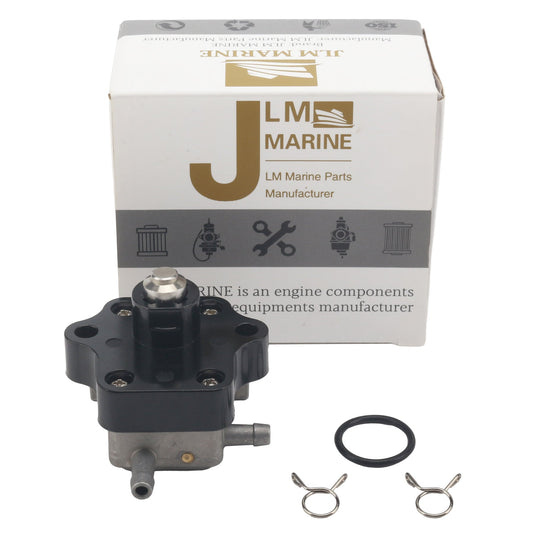

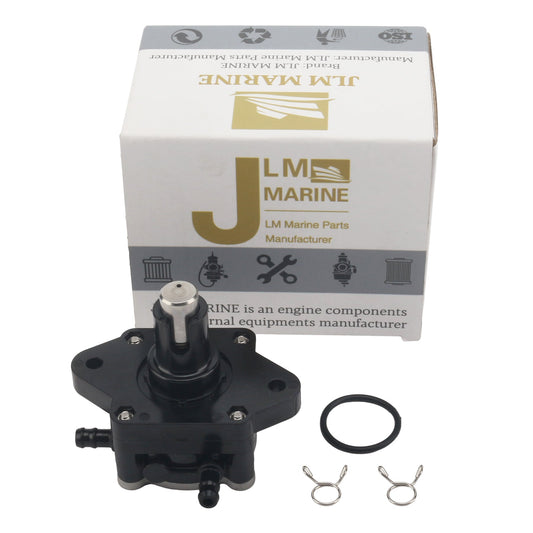

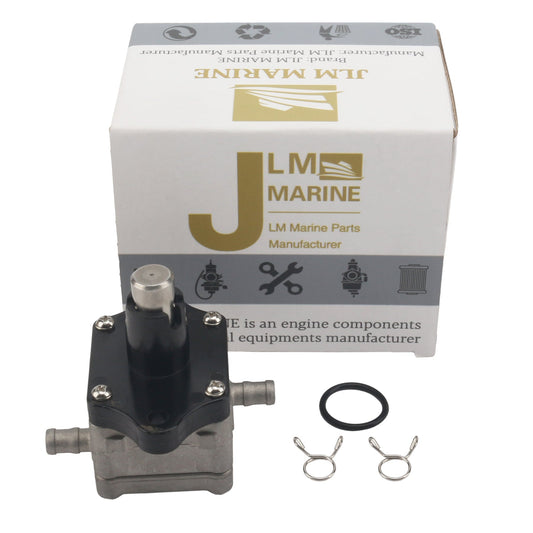
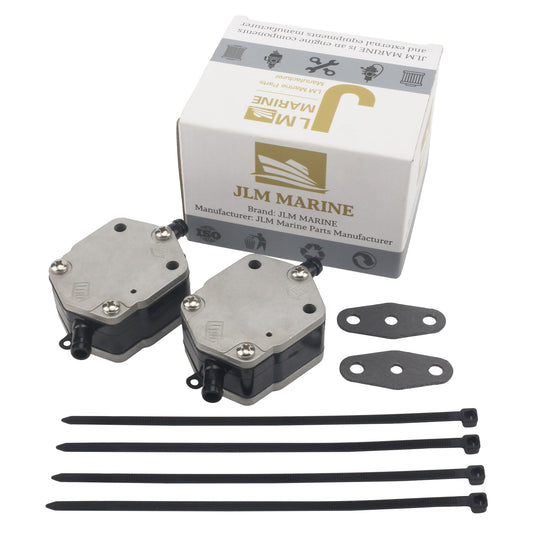
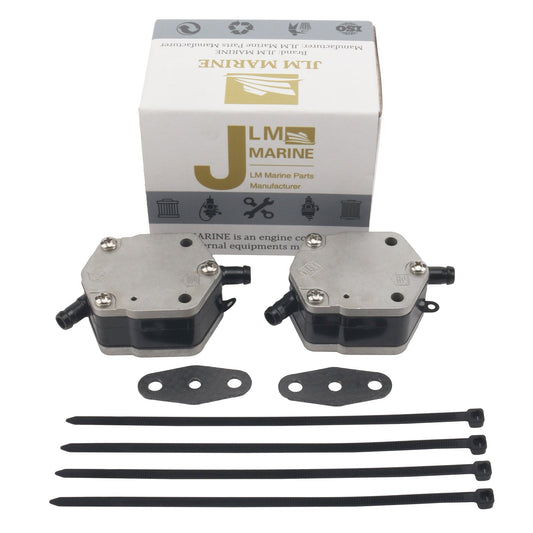
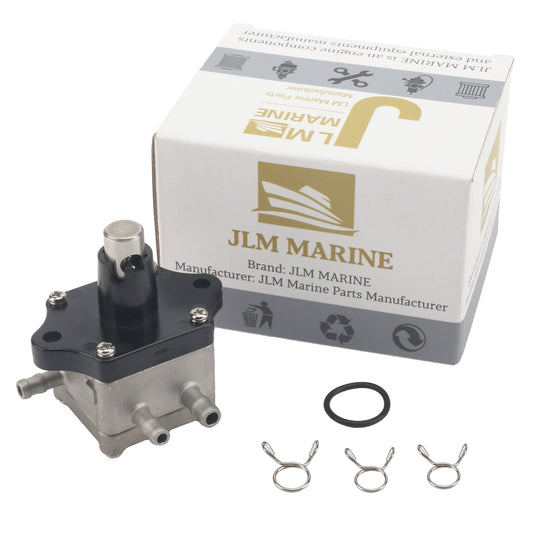
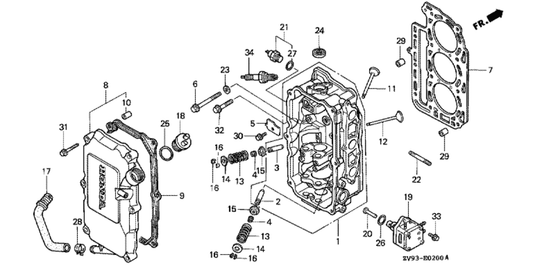
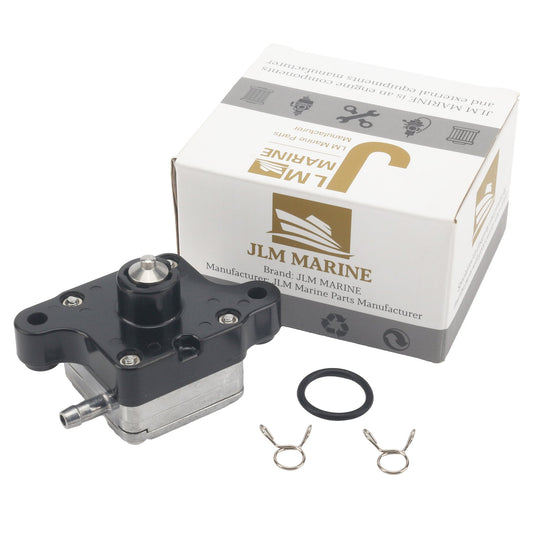
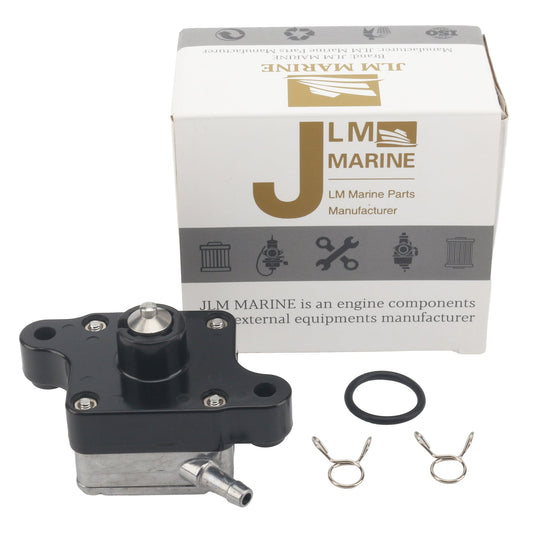

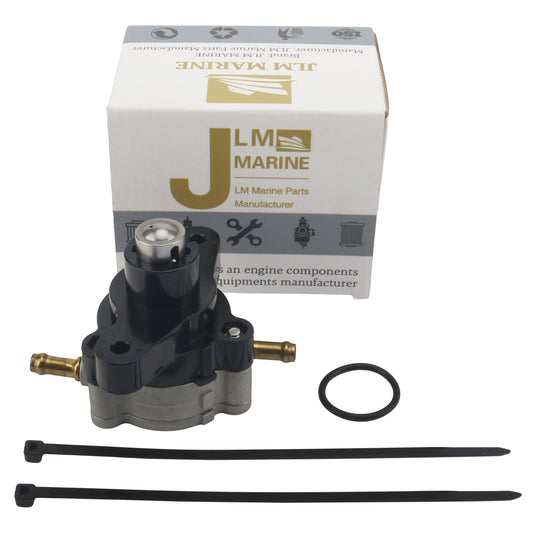
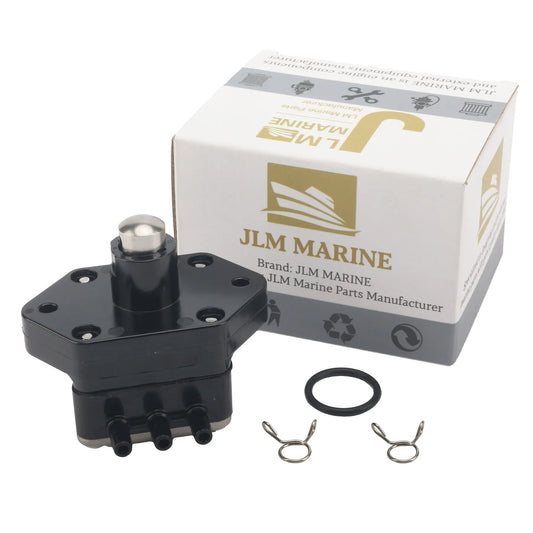


Leave a comment
Please note, comments need to be approved before they are published.